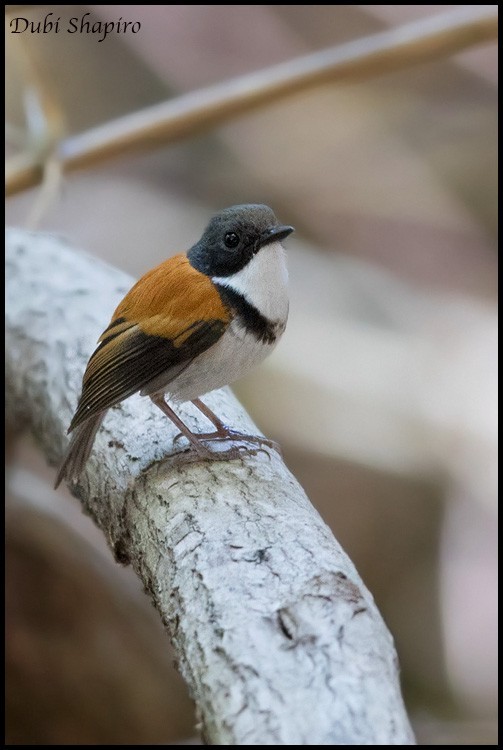Black-banded Flycatcher
A species of Ficedula Flycatchers Scientific name : Ficedula timorensis Genus : Ficedula Flycatchers
Black-banded Flycatcher, A species of Ficedula Flycatchers
Botanical name: Ficedula timorensis
Genus: Ficedula Flycatchers
Content
Description General Info
 Photo By Dubi Shapiro
Photo By Dubi Shapiro Description
The black-banded flycatcher (Ficedula timorensis), also known as the Timor flycatcher, is a species of bird in the family Muscicapidae. In the past the species was considered to be related to the Australasian robins but this was as the result of convergent evolution. It is endemic to Timor island. The black-banded flycatcher is small with a broad bill and distinctive plumage. The species has a white belly, lower rump and throat with a thin black band across the chest. The tail, neck and wings are black and the back, upper wing and shoulders rich chestnut. The plumage of the head is sexually dichromatic, with the head being black in the males and dark grey in the females. The eye and bill is black and the feet and legs are yellow. The calls consist of soft whistles, some of which sound similar to the Timor stubtail. The black-banded flycatcher is an uncommon species that is difficult to see and very little is known about its biology. The natural habitat of the species is lowland monsoon forests and hill forests up to 1200 m. Nothing is known about its breeding behaviour, the only observations of this are adults feeding recently fledged chicks in December. It feeds singly or in pairs on invertebrates, taking its prey mostly by gleaning with a few sallying flights to snatch aerial prey. The species is currently listed as near threatened. It is threatened by habitat loss. 
Size
11 cm
Nest Placement
Cavity
Feeding Habits
Black-banded Flycatcher primarily feeds on small invertebrates. Typically found foraging alone or in pairs, black-banded Flycatcher remains low-key while searching through dense undergrowth, often close to the ground. Prey is captured through gleaning or snatching, and occasionally by aerial pursuit.
Habitat
The habitat of black-banded Flycatcher is primarily composed of lowland monsoon forests and moist hill forests. These environments are characterized by limestone boulders and rocky scree slopes, providing a suitable landscape for the species. Black-banded Flycatcher thrives in areas with dense vegetation that offer ample foraging opportunities and nesting sites.
Dite type
Insectivorous
General Info
Feeding Habits
Bird food type

 Photo By Dubi Shapiro
Photo By Dubi Shapiro Scientific Classification
Phylum
Chordates Class
Birds Order
Perching birds Family
Old world flycatchers Genus
Ficedula Flycatchers Species
Black-banded Flycatcher